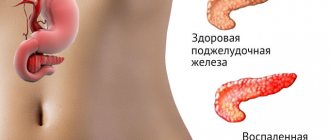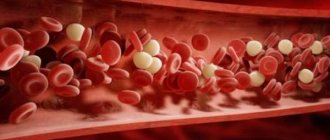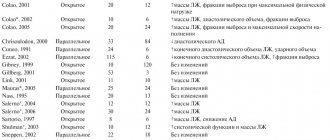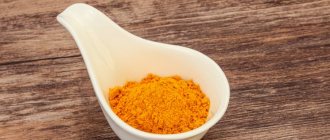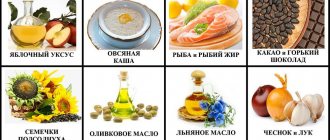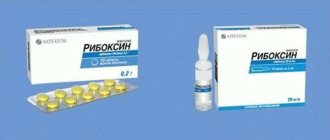Today you can often hear claims that small doses of alcohol are beneficial for the body. And they can be called true. However, the essence of this expression lies in the details. As the famous physician of the late Middle Ages, Paracelsus, said: “Any medicine is a poison, and only measure makes it a medicine.” If we are talking about an alcoholic drink and its doses, then it is necessary to take into account, first of all, its composition, and secondly, the speed of development of addiction.
However, many scientists argue that alcohol, even in small doses, does not have any health benefits. Dr. Lars Müller, head of the Alcohol and Illicit Drugs program at the WHO Regional Office for Europe, spoke about the same thing. From his words it follows that there is only a dose of safe consumption of alcoholic beverages, at which the risk to the body will be small. However, WHO does not set clear boundaries for such values, constantly changing them. Evidence shows that it is safer for your health to avoid drinking alcohol altogether, as it is closely linked to the development of 60 different diseases.
A global health survey1 of more than 50,000 people conducted in England between 1999 and 2008 also found that the benefits of alcohol, even when consumed in small doses, are exaggerated. Scientists have associated this with inaccurate methods for analyzing statistical data and urge caution in interpreting the results of such studies and not believing them if they claim the harmlessness and even benefits of alcoholic beverages.
Wine antioxidants
After examining more than 35 thousand people in 1978, researchers decided that daily consumption of dry red wine protected French residents from heart disease and cancer. According to scientists, the most important thing in this drink is polyphenols
.
These are biologically active substances that work as antioxidants. They protect the body from the destructive effects of free radicals and become a means of preventing cardiovascular diseases and even cancer. Of course, if you drink wine in moderate doses - one or two small glasses a day.
Potential Harm
Any type of wine has the ability to dilate blood vessels, even in small quantities. This increases a person's heart rate and coronary blood flow. Excessive alcohol consumption contributes to:
- Heart rhythm disturbances. (As a result of a disruption in the rhythm of contraction of the upper chambers of the heart, blood stagnation occurs in the left atrium. This causes the formation of a blood clot in its cavity and leads to an ischemic stroke).
- Weakening of the heart muscle. (Leads to cardiomyopathy, which results in heart failure).
- Increased blood pressure. (Leads to hardening of arterial walls. This increases the risk of stroke and myocardial infarction.)
People suffering from asthma are strictly prohibited from drinking strong drinks.
Not so simple
France is not the only country where dry red wine is produced and consumed. However, for some reason, the positive effect of alcoholic beverages was not found
in this country’s closest regional neighbors - Spain, Portugal or Italy.
Wine did not “work” in combination with the Mediterranean diet, which was recognized not only as an effective means of preventing cardiovascular diseases, but also as a world heritage. And over time, it turned out that while the level of heart disease is relatively low, the French are no less likely than other Europeans to suffer from obesity and liver disease. Including cirrhosis
, one of the main reasons for the development of which is alcohol abuse.
Wine: for health or against?
It turns out that wine can benefit a person, but only if it is consumed wisely and in moderation. Good wine improves metabolism in the body. Wines contain compounds that stimulate carbohydrate, nitrogen and mineral metabolism. Interestingly, there are no such compounds in grape juice. Our expert tells us more about the dangers and benefits of red wine and white wine.
Mariyat Mukhina
Doctor of Medical Sciences, nutritionist
Aged wine is rich in vitamins and microelements. Microelements: manganese, magnesium, iodine, titanium, cobalt, potassium, phosphorus, rubidium. Vitamins: C, B, PP. In addition, wine contains various acids, esters, essential oils and aldehydes. Together, these substances, on the one hand, tone the body, and on the other, reduce blood pressure. Everyone has their own recommended dose; it depends on the state of the immune system, the functioning of the liver and the body as a whole.
Online advisers claim that if you drink about 150 ml of quality wine per week, you can strengthen your arteries, lower blood cholesterol levels, reduce the risk of cardiovascular diseases, and slow down the aging process of tissues. It doesn't matter whether it's a one-time dose or spread out over the whole week. The mechanism is simple: wine improves lipid metabolism, which, in turn, prevents the development of atherosclerosis. Increases the diameter of blood vessels, which reduces pressure. Dissolves plaques, reducing the risk of vascular blockage.
True, the question here is the regularity of use, which threatens to become addictive to the alcoholic drink. It is equally effective to strengthen arteries and remove “bad” cholesterol using lemons, raw beets or pumpkin.
Since ancient times, red wines have been used to treat influenza, pneumonia, and bronchopneumonia to make antipyretic drinks.
Wine in small doses, approximately 50 grams, has a tonic, diuretic, anti-stress, bactericidal and anti-allergic effect on the human body. Chilled dry champagne helps with nervous tension.
When a dysentery epidemic broke out in the Crimea in the 20s of the last century, its spread could only be stopped with the help of diluted wine. There was a catastrophic shortage of medicines at that time. Adding wine to water is also advisable for other gastrointestinal diseases. The Ogonyok magazine wrote in 1997 (No. 31) that natural wine even kills cholera vibrios and typhus pathogens. Interestingly, even chemists cannot explain such properties yet.
Wine will not interfere with time zone shifts, long journeys or flights. To restore the lost water-salt balance, you need to drink a little dry wine on the day of your move or flight and the next day. In this case, wine replaces the electrolyte solution. If you add a warm bath to it, you can assume that the fluid lost during the flight has been restored. After all, the body receives water through the skin.
However, during flights, salted tomato juice also helps to maintain the water-salt balance.
And what is especially important: we are talking only about natural grape wines. Fruit and berry drinks and powdered drinks do not have such medicinal properties.
Biologists from the Southern University of Science and Technology (Department of Biology, Southern University of Science and Technology, Shenzhen, Guangdong, China) believe that melatonin in wine improves mood and helps get rid of nervous tension. One glass of wine with dinner helps you fall asleep and makes sleep peaceful and long.
French research shows that drinking small amounts of wine regularly can improve memory. Recommendations from French nutritionists based on Dr. Eylo’s table, well-known in France:
To support the heart muscle and brain:
light white wines, especially champagne. Wine strengthens the walls of blood vessels, preventing the risk of heart attacks and strokes.
For indigestion:
dry red wines (such as saperavi, cabernet).
For anemia:
two glasses of red table wine per day.
For atherosclerosis:
dry white wines with mineral water.
For vitamin deficiency:
any natural wine.
For flu, bronchitis, pneumonia:
hot red wine with sugar or honey. By adding warming spices, the effectiveness of the drink increases.
With exhaustion, loss of strength:
port, Madeira, sherry (several spoons per day).
When vomiting:
very chilled dry champagne.
For men
Dry red wine helps maintain normal testosterone levels.
Women
– maintain youthful and fresh skin due to a large amount of antioxidants.
Wine also strengthens hair and nails. During menstruation, wine is shown to stimulate the production of estrogen.
Know your limits
The main rule in drinking wine is not to overdo it. Danish scientists conducted a long-term study, from which it became clear that the mortality rate from cardiovascular diseases is 50% lower in drinkers of small amounts of wine than in alcoholics or complete abstainers. At the same time, the Danes called the norm for women up to 300 grams, and for men up to 450 grams of wine per day. These studies are confirmed by American and English scientists. Perhaps the reason is the formation of “good” cholesterol and the reduction of “bad” cholesterol thanks to dry red wine. By the way, wine is a high-calorie product. Regular consumption can lead to fat accumulation in the body. Although there are diets with dry red wine, they should only be followed under the supervision of a doctor. Next we will tell you the benefits and harms of red wine.
Risks
With daily consumption of more than 200 grams of wine for women and more than 300 grams for men, wine turns into poison. The functioning of the heart and liver is disrupted, and the psyche suffers. There is a risk of damage to the pancreas, pancreatitis and other diseases of the gastrointestinal tract. Is red wine good for gastritis? No.
According to some studies, alcohol entering the brain can linger there for up to 90 days, affecting the activity of the entire nervous system. Therefore, alcohol abuse will ultimately lead to nervous disorders, including alcoholic psychosis.
Excessive consumption of wine in women increases the risk of breast cancer. Can pregnant women drink red wine? Pregnant women should completely abstain from any alcoholic beverages due to the possible development of fetal pathologies.
In case of severe heart failure or severe organic damage to the heart, the use of alcoholic beverages is completely prohibited.
Quite often, red wine is the cause of severe migraines. Most likely due to polyphenols. You should not drink wine if you have a similar reaction to polyphenols.
From time to time, allergies to wine occur in the form of rashes, dizziness and flatulence. It is even possible to experience asthma attacks after drinking red wine.
Remember: good, and therefore healthy, wine cannot be cheap. It cannot be sold in bags or plastic bottles.
Red or white? Sweet or dry?
We are talking only about natural grape wine. What are the benefits of red wine? It is believed that it is richer in composition than white, but white is a more effective antioxidant.
In case of diabetes, preference should be given to dry due to its low sugar content.
The benefits of dry red wine are greater than those of semi-sweet wine. The more sugar in wine, the less benefits. This is the law.
White wine is more suitable to reduce the feeling of hunger, and red wine is more suitable to strengthen the walls of blood vessels.
White better regulates blood cholesterol levels, and red has a rejuvenating effect on the skin.
Dry white wine helps with flatulence and constipation. Red semi-sweet improves your mood faster.
White reduces blood clotting. Red helps restore a weakened body.
White wine has a beneficial effect on lung function. Red replenishes the lack of vitamin P, which allows the absorption of ascorbic acid.
Pink is useful for liver diseases, colitis and nervous excitability.
Security questions
One glass of red wine with a volume of about 150 ml contains a little more than one unit - 12 ml of pure alcohol. A unit
is a unit adopted in Europe equal to 10 milliliters of ethanol.
The dose considered relatively safe for women is two units, for men - three. That is, just a couple of glasses of wine for women is already more than the maximum permissible daily limit of alcohol. “This is a lot,” says Evgeny Brun, director of the Moscow Scientific and Practical Center for Narcology. — If you do the math, it turns out that with a daily glass of wine a person drinks 54 liters per year, which is equivalent to 11 liters of vodka or 4 liters of alcohol per year. Formally, this doesn’t seem like much, but the World Health Organization recommends that you never drink more than 2 liters of alcohol per year.” Gastroenterologists also accept the theory regarding the safe amount of alcohol
, but only in relation to the liver and with reservations. The liver will process a couple of units a day without any problems - however, if it is absolutely healthy. At the same time, for some other organs, for example, the pancreas, there is no safe amount of alcohol, and they suffer from any dose of ethanol.
What else should heart patients include in their diet?
Nutritionists say that a properly selected diet can reduce the risk of heart attacks by 80%. To do this, the menu includes a number of products that have the ability to improve the elasticity of blood vessels, strengthen the heart muscle and have other positive effects on the human body.
Fruits
Fruits are included in the diet to strengthen the heart muscle. The vitamins, minerals and fiber they contain help a person avoid serious vascular problems. Of particular value are 4 types of fruits:
- Pomegranate - stimulates the blood circulation process, ensures elasticity of the walls of blood vessels.
- Bananas are included in the menu for anemia.
- Lemon - eaten for arrhythmia, heart failure, tachycardia and coronary artery disease.
- Persimmon - the magnesium contained in this fruit helps to dilate the walls of blood vessels. Persimmon relieves tension in the heart muscle.
The vitamins B, A and C contained in fruits are of particular importance for the cardiovascular system.
Vegetables
Scientists have proven that beta-carotene contained in vegetables prolongs human life. Their daily consumption reduces the risk of heart attack. Some of the most heart-healthy vegetables include:
- Onion. It influences the proper contraction of the heart muscle, dilates blood vessels, clears them of cholesterol, and lowers blood pressure.
- Peppers. The diet includes sweet and bitter varieties. The antioxidants they contain stimulate the functioning of all internal organs. Peppers cleanse the body of cholesterol.
- Tomatoes. It is recommended to be included in the menu for angina pectoris, hypertension, atherosclerosis, varicose veins and coronary heart disease.
- Pumpkin. Normalizes blood circulation, cleanses the body of cholesterol and equalizes the water-salt balance.
- Garlic. Contains more than 70 substances necessary for the heart. They stimulate blood flow and lower blood pressure, relax the walls of blood vessels and normalize blood circulation. Garlic is recommended for use for arrhythmia.
You can eat vegetables in any form. Vegetable juices are very beneficial for the body.
Berries
Fresh berries are extremely beneficial for the cardiovascular system; they fill the human body with vitamins. They play a huge role in boosting immunity. Especially useful:
- Hawthorn - slows down the process of destruction of the heart muscle, relieves heart attacks, improves the body's oxygen supply.
- Cranberry - the berry has an effect on the entire body. It improves immunity, stimulates blood circulation, cleanses blood vessels and strengthens the heart muscle.
- Viburnum - a berry recommended for arrhythmia, nervous disorders and insomnia.
- Grapes - thanks to this berry, it is possible to solve problems with hypertension and heart failure.
Viburnum and cranberries are perfectly preserved fresh for a long time. Fresh grapes are on sale all year round.
Nuts
The value of nuts lies in the protein and saturated fat they contain. They help cleanse the blood of cholesterol. Walnuts and almonds are especially beneficial for the body. They contain Omega-3 lipids. Peanuts contain folic acid and resveratrol, which are essential for heart health.
Find the 10 healthiest nuts for your heart here.
Dried fruits
Dried fruits retain a large amount of useful substances. To enhance their effect on blood vessels, it is better to use a mix of dried fruits, consisting of dried apricots, raisins and prunes. Figs and dates are important for the heart.
Also, for the treatment of the heart, a healing remedy is prepared from dried fruits, walnuts and natural honey. One of the most effective remedies is Amosov paste.
Dairy
The most valuable dairy product for the heart is cow's milk. It contains the lowest percentage of fat. It is recommended to consume only skim milk. The risk of heart pathologies and the development of atherosclerosis is reduced due to the potassium contained in milk. Milk is recommended for angina and hypertension.
Important! In case of vascular calcification, milk can be included in the diet only with the permission of a doctor.
Dairy products that are important for the cardiovascular system include: koumiss, sheep cheese, kefir, cottage cheese, yogurts and butter.
Fish
The value of fish is in the polyunsaturated fatty acids it contains. Mackerel, sardines and herring contain up to 30% fatty acids. They normalize metabolism and cleanse the blood of triglycerides. Regular consumption of fish in quantities of at least 100 grams per day can reduce the risk of stroke.
Read more about the effect of fish on the cardiovascular system.
bitter chocolate
Eating dark chocolate increases epicatechin levels in the blood plasma. This substance affects blood vessels and lymph nodes. Thanks to dark chocolate, the development of atherosclerosis stops. Black chocolate has been proven to have beneficial effects on the heart.
Turmeric
The spice has antibacterial properties. The plant is used to treat cardiotoxicity and other heart pathologies. Adding turmeric to food reduces the risk of developing atherosclerosis, protects against hypertension and toxic poisoning. Turmeric also improves the elasticity of the walls of blood vessels.
Flaxseed and olive oils
To treat the heart, it is best to use a mixture of oils. It contains substances that prevent the formation of cholesterol plaques and blood clots. Oils normalize blood pressure. It is useful to include them in the diet of people who have had a heart attack, suffer from atherosclerosis, anemia and angina.
Soft drinks
The most important drink for the heart is pure water. Lack of fluid in the human body is the cause of coronary heart disease. You need to drink at least 2-2.5 liters of liquid per day. Heart-healthy drinks include:
- juices (grape, pomegranate, tomato, cranberry);
- green tea;
- soy milk;
- natural coffee.
When including these drinks in the diet, it is necessary to take into account their contraindications and permitted consumption rates. For example, it is not recommended to drink more than 2 cups of coffee per day.
How to drink
As practice shows, in fact, “prevention” rarely ends with one glass a day. As a rule, people drink much more
than they intended. Thus, residents of the UK manage to drink a whole bottle of wine more than they planned in a week. And over the course of a year, 225 million liters of excess alcohol “flows” across this country. “In addition, you can’t immediately determine whether a person has risk factors for alcohol,” says Brun, “this is only revealed in hindsight, when abuse begins.” The effect of wine antioxidants can only be noticed in the future, but ethanol, contained in all alcoholic drinks, begins to work immediately. After the first glass, the likelihood of developing a stroke increases 2.3 times and decreases by 30 percent only after 24 hours. Attempts to “raise hemoglobin” and “improve appetite” with a glass of wine during pregnancy are especially dangerous. The alcohol contained in any alcoholic drink freely penetrates into the baby’s blood through the placenta. The body of the unborn child is not able to cope with toxic substances that disrupt its development. Alcohol has also been recognized as a drug that causes the most severe consequences from use. On a 100-point scale assessing the harm of psychoactive substances to humans, alcohol is in first place with 72 points, ahead of crack and heroin. “Our everyday culture is to drink alcohol for any reason,” reminds Brun, “this should not happen.”
How different peoples tolerate alcohol
It is believed that among dark-haired Caucasians with dark skin (with the exception of Mongoloids), alcohol dependence with regular use develops much more slowly than among people with fair hair and skin. This is due to the fact that dark-skinned people have the genes of peoples of southern origin, who were formed in conditions of eating large quantities of berries and fruits, which contain a lot of glucose, grape acid, fiber and pectin. These components undergo alcoholic fermentation in the large intestine, therefore, over many generations, the organisms of representatives of these peoples are adapted to microdoses of ethanol.
At the same time, fair-skinned and fair-haired people are carriers of the genes of northern peoples, who are accustomed to eating animal products and vegetables, which mainly produce fermented milk. For them, ethanol acts as a foreign substance, so addiction to it is formed gradually through other mechanisms. That is why, if you do not want to give up alcohol, fair-skinned people with blond hair are advised to drink less often to avoid addiction. The word “less often” means no more than once a month. At the same time, for dark-skinned, dark-haired people, subject to moderate dosage, the risk of developing alcohol dependence is much less.
A little about prevention
A “glass of red” is beneficial only as a reason to observe a certain ritual. Rarely does anyone pour wine into themselves while running: the wine ritual implies good company, delicious food and the absence of urgent matters. But such circumstances in themselves contribute to relaxation, relief from the effects of stress
and the prevention of cardiovascular diseases - even without any wine. And there are polyphenols in green tea and red grapes, which can also be part of a dinner in good company.
Before and after IVF
Thus, we can conclude: in small doses, at dinner, dry red wine can be consumed and even beneficial in preparation for the protocol. In the IVF program itself, it is undesirable to take alcoholic beverages: during hormonal stimulation, the load on the liver increases significantly, and additional stress factors in the form of the need to process alcohol in the liver at this moment are completely unnecessary.
Well, after the transfer, do not forget that you should behave as a pregnant woman should. And the first rule during pregnancy is that alcohol is strictly contraindicated!
Sources:
* https://regnum.ru/news/2333647.html
** https://ndb.nal.usda.gov/
The most important
The myth about the benefits of moderate doses of alcohol, which appeared thanks to the French lifestyle, was not confirmed by the example of other Europeans who regularly drink red wine.
Beneficial substances – polyphenols – contained in wine can also be obtained from other, harmless sources. For example, grapes, their juice or green tea. Tags:
- Antioxidants
- Alcohol
- Brun
- Safety
- Addiction
1 comment • To leave a comment you must be an authorized user
- DragonCat About “generally accepted” - in some places in Europe (and not only) “generally accepted” is considered to be an extremely positive attitude towards homosexuals. Is this a reason to raise a child this way? Circumcision is considered generally accepted among Jews and Muslims. Is this a reason to take my son to the operating room? Not everything “generally accepted” is the ultimate truth. For example, it’s harmful to live in the city, but for some reason I don’t observe a sharp outflow of city dwellers to nature for clean air - everything is good in moderation. Of course, the uncultured consumption of alcohol substitutes is an evil similar to smoking and must be fought against. But old wine (and not only honey, for example) traditions are not only pleasant, but also useful. If not for health, then for mood, general attitude to life and cultural development in general.
Red vs white: which is better?
Red wine owes its benefits to the seeds and skins of grapes. It was there that scientists discovered almost 600 substances that improve well-being - from tannins to essential amino acids.
White wine is made from light grape varieties, it ferments without skins, and is best served with fish and poultry. That's probably all they know about white wine.
In fact, white wine can be made from any grape variety. Recent studies have proven that grape pulp is no less useful than the skin and seeds.
And white wine contains a lot of useful substances - from magnesium to selenium. Tannins and resveratol, however, are much less.
Choosing red or white is a matter of taste. The main thing is to choose correctly.
Dry, sweet, semi-sweet... What's the difference?
If all the sugar turns into alcohol during fermentation, the wine is called dry.
If some sugar remains, depending on the amount of sugar, the wine becomes sweet or semi-sweet. It depends on both the grape variety and the technology.
For example, French sweet wines from the Bordeaux region with a rich taste are obtained if a special fungus, noble mold, “participates” in the preparation process.
What does the label tell you?
There is enough information on the label. The main thing is to know where to look. So, the label says:
- manufacturer's name
- wine name
- grape variety (if there are several, the dominant one comes first)
- region of origin (or vineyard on German labels)
- vintage
- quantity in bottle and alcohol content
Labels on expensive wines indicate that the wine was bottled directly at the producer's estate, which suggests higher quality.
What to look for?
- Labels on expensive wines indicate that the wine was bottled directly at the producer's estate, which suggests higher quality. Can be recognized by the words “Estate-bottled”, “mis en boutelle au chateau/ domain”.
- These villages are famous for their vineyards. The title contains the word "Cru"
- The wine is made using traditional champagne technology - “Method tradicionelle”
- The wine is made from grapes on old vines, "Vieilles vignes". It is more fragrant.
What should you not “fall for”?
Various “superior”, “reserve”, “limited release”, “grand vin”, “from the founder's bin”, as well as information on the back label are often advertising in nature and do not say anything about the quality of the wine.
Red double protection
Wine performs a dual function in the body: it simultaneously contains ethanol and phytocomponents. From a medical point of view, a natural drink is of interest in calculating the ethyl equivalent.
In small quantities, alcohol has a beneficial effect on the body: ethanol can increase the level of good cholesterol, which prevents the development of atherosclerosis and reduces the risk of the formation of vascular plaques.
But wine is much healthier than vodka; in addition to ethyl, it contains valuable plant components:
- flavonoids, the effectiveness of these antioxidants is comparable to vitamin E, which rejuvenates the body, especially women;
- quercetin, which blocks low-density lipoproteins;
- polyphenols that prevent the formation of blood clots;
- Resveratrol, contained in the skin of dark grape varieties, has anti-inflammatory and vasodilating effects.
The double benefits of red wine have been confirmed by laboratory studies.
Positive properties of wine for women
It is no coincidence that wine is called “female alcohol.” Due to its low alcohol content, this light drink is loved by the fair sex all over the world. This was also facilitated by a certain number of positive properties that red wine has on the female body:
- its use stimulates collagen synthesis - as a result, the condition of the skin improves, its elasticity increases, and stimulation of hair and nail growth occurs;
- flavonoids, which prevent the development of cancer cells, reduce the risk of developing breast cancer;
- In addition to fighting extra pounds, drinking wine stimulates blood circulation, which helps fight the worst enemy of all women - cellulite.
But, despite all the benefits of consuming wine for the female body, drinking it during pregnancy or lactation, like any alcoholic drink, is strictly contraindicated.
Can I drink it to clean blood vessels?
Wine itself only slightly contributes to the cleaning of blood vessels, due to the presence of phytoncides (which improve the elasticity of the walls and reduce the likelihood of the formation of cholesterol plaques on them) and ethyl alcohol (it stimulates the breakdown of lipids that are part of atherosclerotic plaques).
But all this is relevant only when drinking small portions of wine.
Such “cleaning” of blood vessels should not be carried out in the presence of chronic liver diseases.
But this drink can be used in combination with other components , which specifically help cleanse blood vessels. Wine will slightly increase blood pressure and accelerate the breakdown of low-density cholesterol.
Effects on the brain
In theory, wine improves blood circulation in the brain. But in practice, with frequent abuse of alcoholic beverages, there is a high probability of stroke - rupture of blood vessels due to excessive thinning of their walls.
Doctors say that a small amount of wine will be beneficial for those who suffer from migraines or hypotension . In other cases, you should not abuse it, and most of the beneficial properties of this drink can be replaced with ordinary grape juice.
